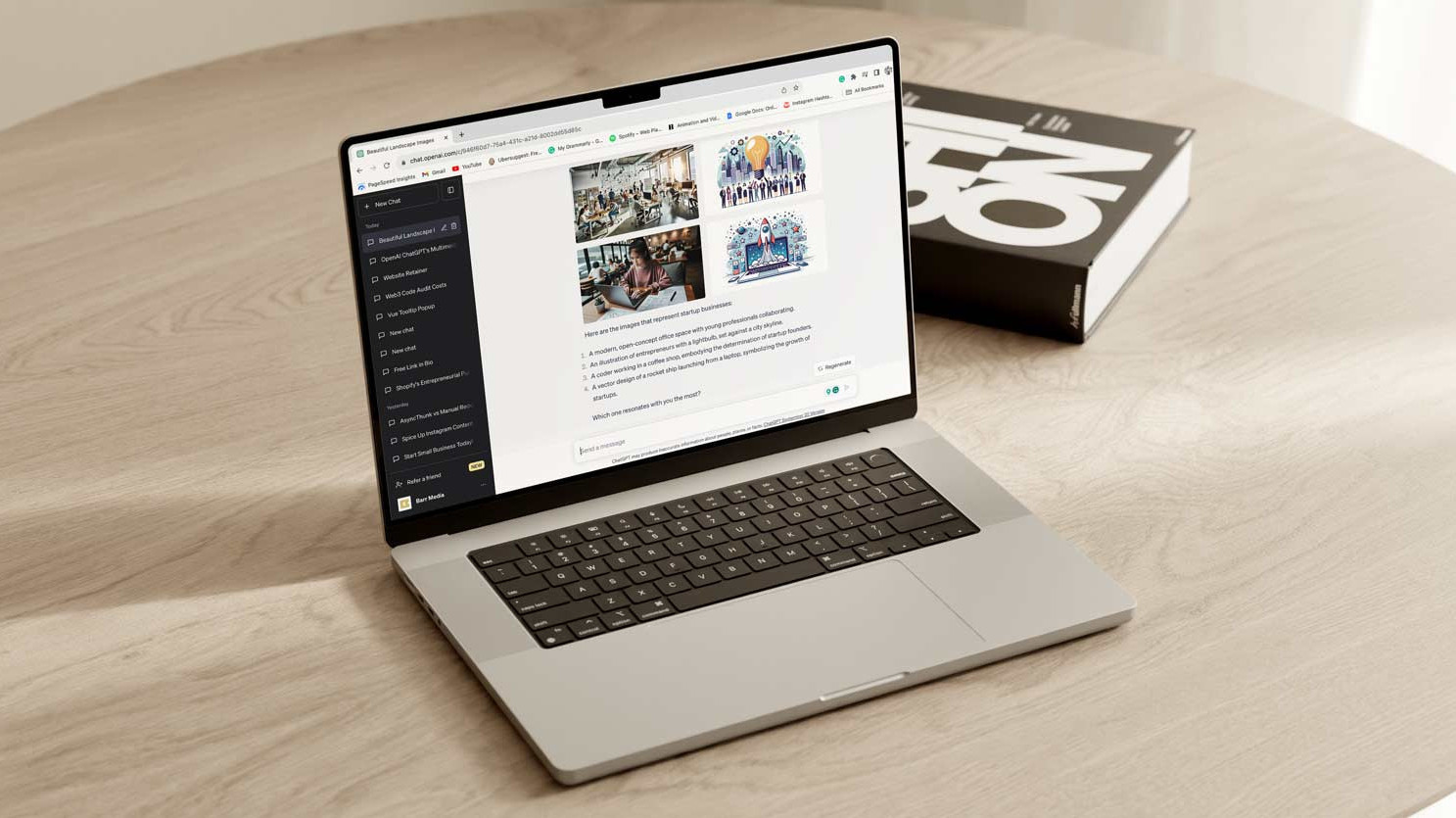Artificial Intelligence
October 2023
OpenAI Unveils Web Search for Chatgpt and Introduces Dall-E 3 Integration

OpenAI recently announced the official addition of the web search feature to ChatGPT, marking a significant development since its beta release a few weeks ago. This addition has been highly anticipated, especially after its reintroduction to the beta version following a short pause.
Within the last year, ChatGPT, the AI-powered chatbot from OpenAI, has garnered massive global attention.
Historically, its knowledge had a cut-off in September 2021, making real-time web searches infeasible. This changed in March when OpenAI began integrating internet services with ChatGPT. However, this integration wasn't without challenges, as the dynamic nature of the web differs from static datasets, potentially leading to misuse and unpredictable outcomes.
By May, a major development surfaced: the integration of Bing's web search capabilities, thanks to OpenAI's collaboration with its corporate supporter, Microsoft. This feature was later extended to the ChatGPT mobile app in June. But there was a brief setback when it was found that ChatGPT could display content behind paywalls.
Addressing this, OpenAI revamped the 'Browse with Bing' feature in September, ensuring that ChatGPT would respect the guidelines set by website owners, akin to how conventional web crawlers operate. Now, this Bing browsing feature is readily accessible for all Plus and Enterprise subscribers without any additional adjustments in settings.
On another exciting front, OpenAI has moved DALL-E 3, the innovative text-to-image generator, into beta mode. This new iteration offers seamless integration with ChatGPT. Consequently, users can enjoy a simplified process when prompting DALL-E to produce images, with ChatGPT facilitating accurate results. Furthermore, the integration means users can receive images directly within their text interactions, eliminating the need to switch applications. The DALL-E 3 beta version is currently accessible online and on mobile, activated via the GPT-4 tab within ChatGPT.
Broadening its horizons, ChatGPT is rapidly transitioning from merely a text generator to a platform that embraces both audio and visual elements. A testament to this was last month's update where ChatGPT was endowed with voice capabilities, bridging the gap between traditional voice assistants and advanced language models. This allows users to verbally interact with the chatbot, making dynamic requests like on-the-spot storytelling.
Moreover, the image search feature in ChatGPT will enable users to upload photos, identify objects, or find related items, enhancing the user experience.
The recent updates reflect OpenAI's ambitious endeavour to evolve ChatGPT into a comprehensive, multimedia, real-time generative search platform.
Potential Implications of ChatGPT's Advanced Capabilities
The recent advancements in ChatGPT by OpenAI have set the stage for transformative effects across multiple sectors. By harnessing its newfound powers, industries can benefit in ways previously unimagined.
- Education: Students worldwide can now tap into ChatGPT as an advanced multimedia learning assistant. Whether it's complex scientific concepts or intricate historical events, visual explanations provided by the tool can make comprehension a breeze. Moreover, the real-time web search ensures that learners are always equipped with the most up-to-date information, setting a new standard for digital learning platforms.
- Healthcare: In an industry where time is often of the essence, ChatGPT emerges as an aid for healthcare professionals. With its capability to fetch real-time updates, doctors, nurses, and researchers can access the latest medical studies, breakthroughs, and findings hassle-free. Additionally, visualising intricate medical procedures, understanding complex terminologies, or explaining conditions to patients becomes significantly more efficient, enhancing patient care and medical training.
- E-commerce: The e-commerce industry stands to gain immensely from ChatGPT's image integration capabilities. Shoppers can now use product image uploads to discover similar or related items, thereby personalising their online shopping journey. This not only enhances user experience but also streamlines product searches, reducing bounce rates and boosting sales conversions.
- Customer Service and Support: In today's digital age, providing timely and effective customer support is crucial for businesses. ChatGPT's enhanced capabilities can revolutionise this sector. Companies can integrate ChatGPT into their support systems to offer real-time assistance to customers 24/7. Whether it's answering frequently asked questions, visualising product-related queries, or guiding users through complex troubleshooting processes, ChatGPT can handle a myriad of tasks efficiently. The ability to understand and respond to queries in multiple formats – text, voice, and images – ensures a comprehensive and multi-modal approach to customer engagement.
By pushing the boundaries of AI chatbot capabilities, ChatGPT is ushering in a new era of digital interactions, with potential benefits permeating various sectors, driving innovation and efficiency.
Enjoying what you're reading?
See our workPotential Implications of ChatGPT's Advanced Capabilities:
The recent advancements in ChatGPT by OpenAI have set the stage for transformative effects across multiple sectors. By harnessing its newfound powers, industries can benefit in ways previously unimagined.
- Education: The realm of education is set to witness a paradigm shift with ChatGPT's enhancements. Students worldwide can now tap into ChatGPT as an advanced multimedia learning assistant. Whether it's complex scientific concepts or intricate historical events, visual explanations provided by the tool can make comprehension a breeze. Moreover, the real-time web search ensures that learners are always equipped with the most up-to-date information, setting a new standard for digital learning platforms.
- Healthcare: In an industry where time is often of the essence, ChatGPT emerges as a boon for healthcare professionals. With its capability to fetch real-time updates, doctors, nurses, and researchers can access the latest medical studies, breakthroughs, and findings with ease. Additionally, visualising intricate medical procedures, understanding complex terminologies, or explaining conditions to patients becomes significantly more efficient, enhancing patient care and medical training.
- E-commerce: The e-commerce industry stands to gain immensely from ChatGPT's image integration capabilities. Shoppers can now use product image uploads to discover similar or related items, thereby personalising their online shopping journey. This not only enhances user experience but also streamlines product searches, reducing bounce rates and boosting sales conversions.
- Customer Service and Support: In today's digital age, providing timely and effective customer support is crucial for businesses. ChatGPT's enhanced capabilities can revolutionise this sector. Companies can integrate ChatGPT into their support systems to offer real-time assistance to customers 24/7. Whether it's answering frequently asked questions, visualising product-related queries, or guiding users through complex troubleshooting processes, ChatGPT can handle a myriad of tasks efficiently. Furthermore, with its ability to pull real-time data, it can provide customers with the most recent product updates, policy changes, or service information. This not only improves customer satisfaction and loyalty but also reduces the operational costs associated with traditional customer service methods. The ability to understand and respond to queries in multiple formats – text, voice, and images – ensures a comprehensive and multi-modal approach to customer engagement.
By pushing the boundaries of AI chatbot capabilities, ChatGPT is ushering in a new era of digital interactions, with potential benefits permeating various sectors, driving innovation and efficiency.
Future Developments
OpenAI has hinted at more advancements in the pipeline. There's speculation about further enhancing the voice capabilities of ChatGPT, making its interactions even more natural and intuitive. Additionally, there are rumours about potential collaborations with augmented reality (AR) companies, allowing users to have immersive experiences with ChatGPT.
Our Final Thoughts
The rapid and continuous evolution of ChatGPT by OpenAI underscores the transformative potential of AI in reshaping our digital interactions. By seamlessly integrating text, image, and voice, ChatGPT is not merely a chatbot but a pioneering symbol of the multimedia AI revolution.
As it bridges the gap between traditional static databases and the dynamic web, users are gifted with a tool that's both informative and interactive, one that adapts and grows with the ever-changing digital landscape.
As we move forward, it will be fascinating to witness how OpenAI further refines and expands ChatGPT's capabilities. If the current trajectory is any indication, the future holds promising and unprecedented innovations that will continue to redefine our understanding and interaction with AI.
Stay Updated on Cutting-Edge Tech News
Enjoyed this insight? Make sure to subscribe to our Tech Roundup, where we share the most thrilling tech news from around the globe. Stay in the loop and ahead of the curve by tapping here.
